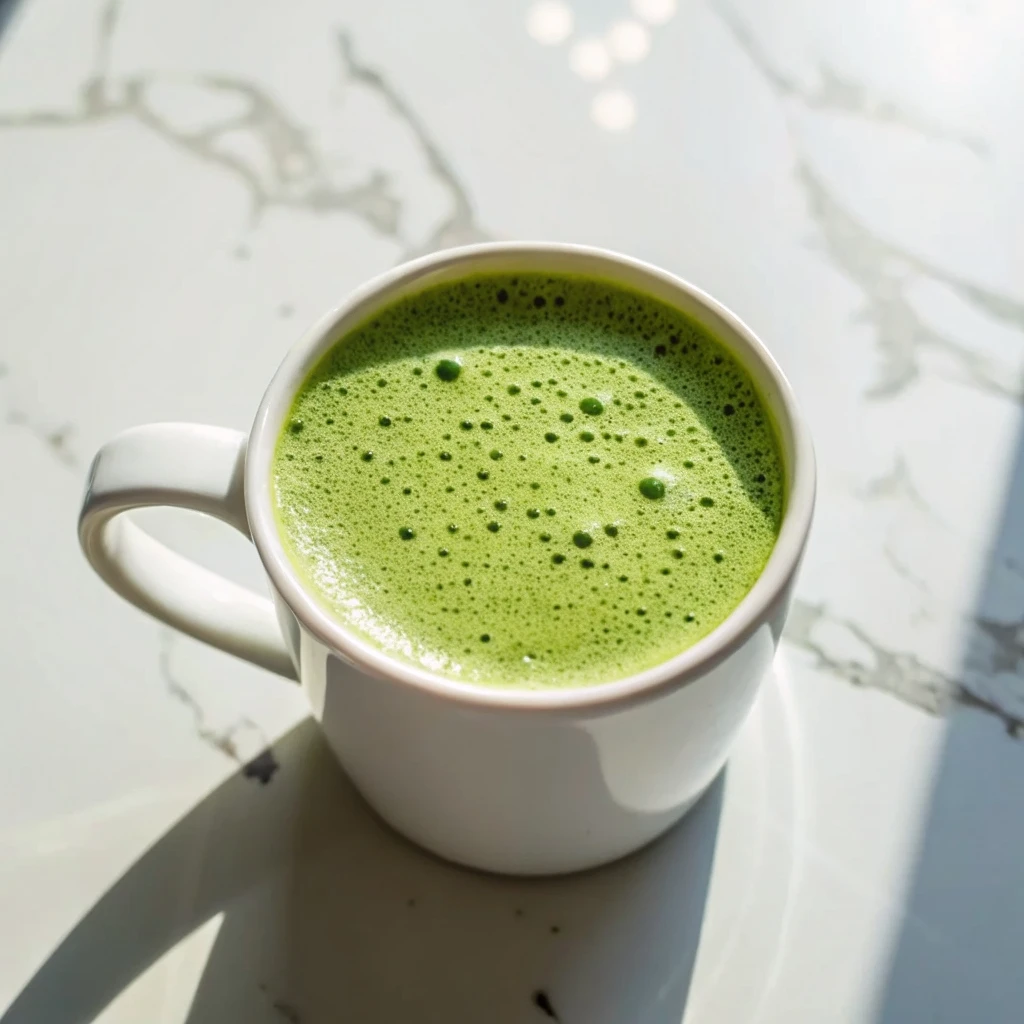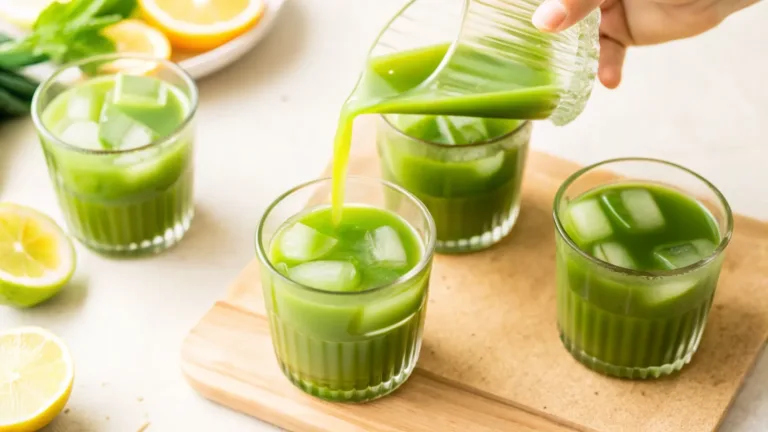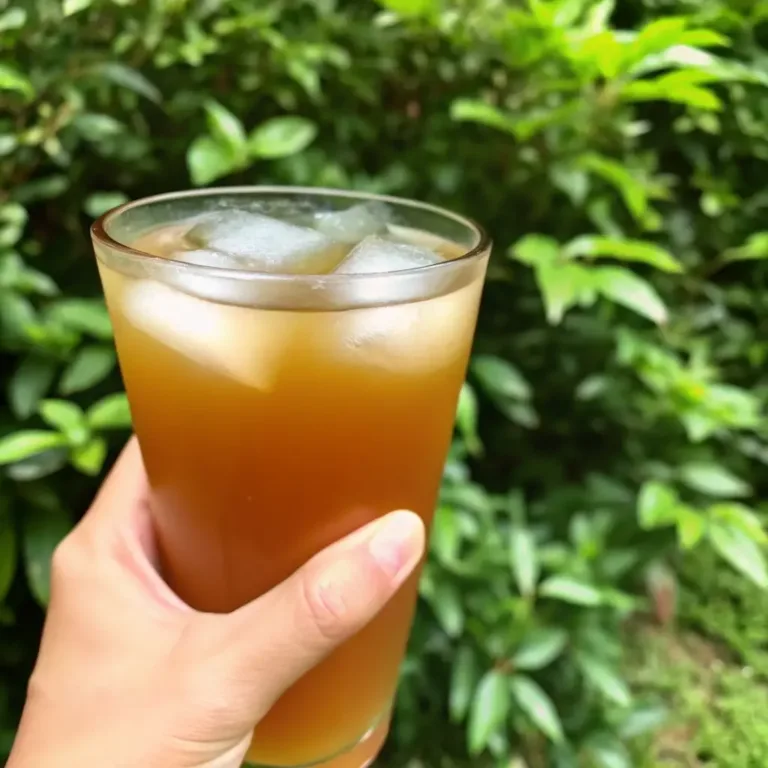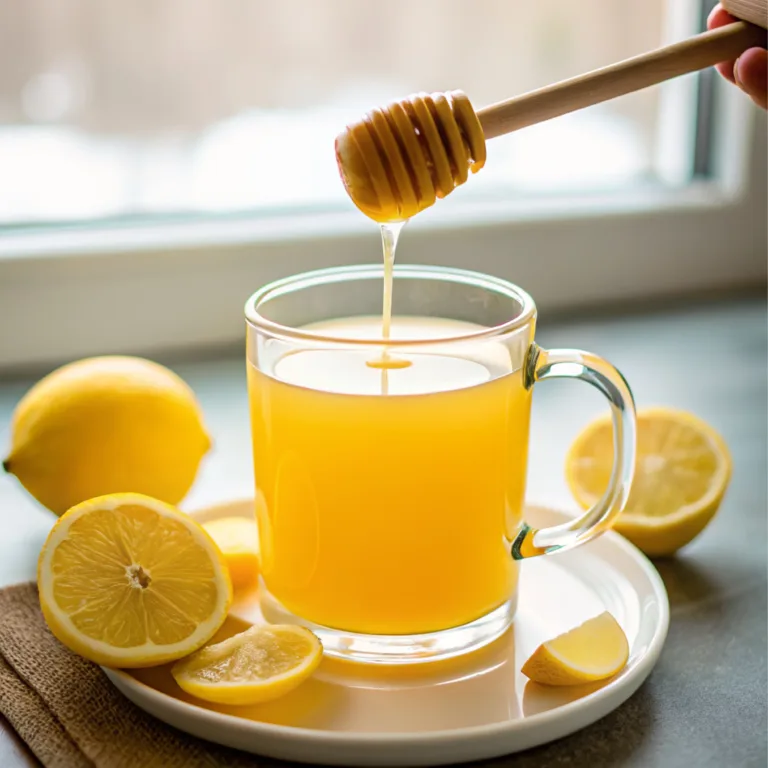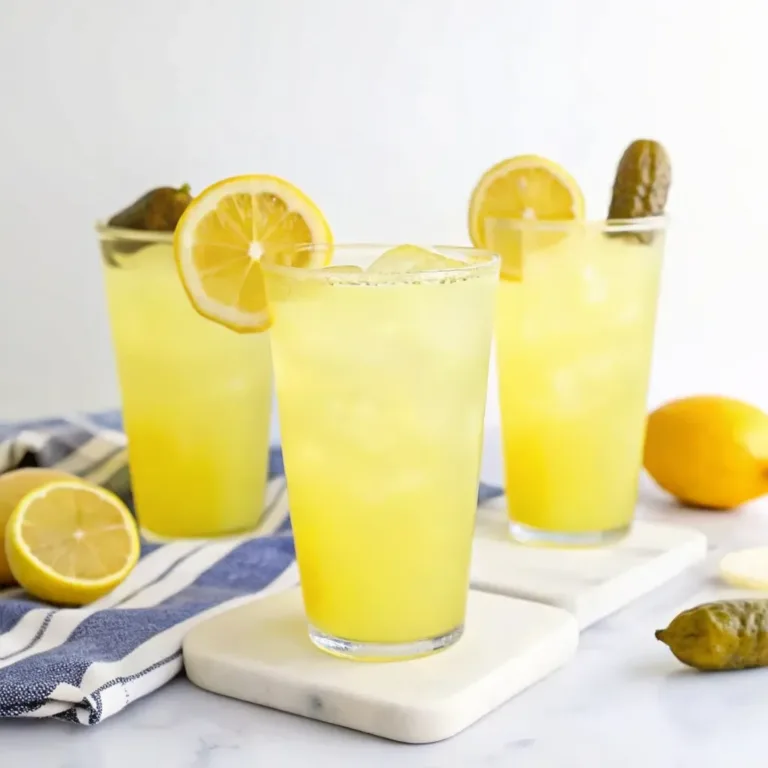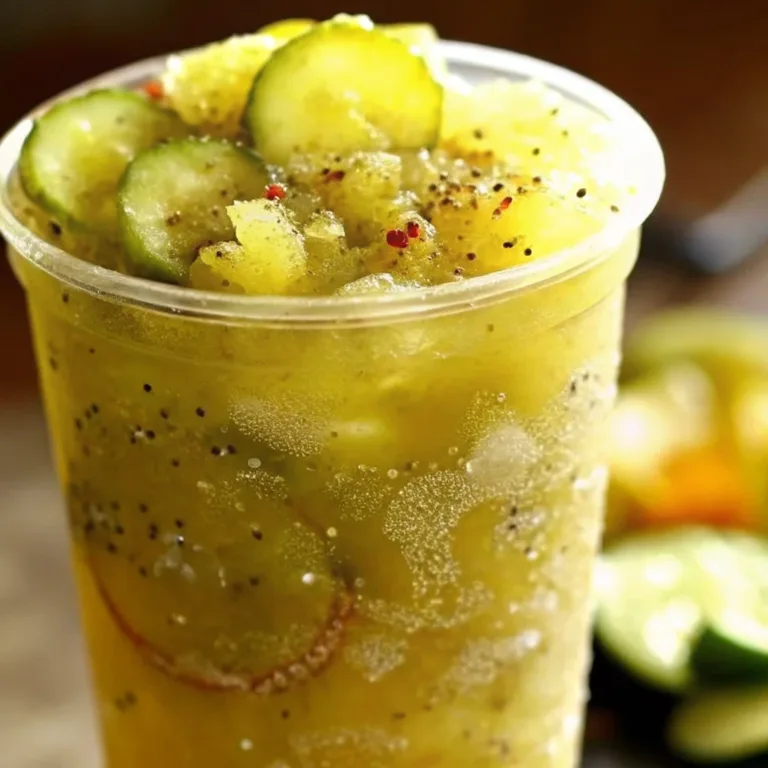Japanese Mounjaro Recipe: Natural Weight Loss Drink That Works
If you’re tired of bland weight-loss drinks that do nothing, here’s something simpler and more powerful. This Japanese Mounjaro tonic made with matcha, lemon, ginger, apple cider vinegar, and pink salt has helped people feel less bloated, more energized, and actually stay on track with their goals


Japanese Mounjaro Recipe: Natural Weight Loss Drink That Works
Ingredients
Method
- 1. Brew your tea base using hot but not boiling water.
- 2. Add ginger, lemon juice, vinegar, and salt into a mug or glass jar.
- 3. Pour the hot tea into the mug and stir well.
- 4. Add optional sweetener and stir until dissolved.
- 5. Enjoy warm or chill in the fridge to serve cold.
Nutrition
Notes
Tried this recipe?
Let us know how it was!Table of Contents
Table of Contents
Ingredients and Nutritional Value
Complete Ingredient List and Health Properties
The Japanese Mounjaro recipe starts with a few simple, natural ingredients most of which you may already have at home. These components aren’t just flavorful they’ve been trusted in Japanese wellness culture for centuries.

Here’s what you’ll need:
- Fresh ginger root (boosts digestion and circulation)
- Lemon or yuzu juice (alkalizes and supports liver function)
- Apple cider vinegar (aids blood sugar control and gut health)
- Matcha or roasted barley tea (cleanses, energizes, and lowers inflammation)
- Sea salt or pink Himalayan salt (restores electrolyte balance)
- Optional: honey or monk fruit for sweetness
Each ingredient in the Japanese Mounjaro recipe plays a specific role. Ginger stimulates digestion and fights inflammation. Lemon adds vitamin C and supports detox. Vinegar balances blood sugar, especially when consumed before meals. The addition of matcha or mugicha (barley tea) introduces catechins and antioxidants while giving the drink its earthy base.
Salt might seem unusual in a wellness drink, but traditional Japanese broths and teas often contain mineral-rich salt to support adrenal health especially during weight loss or fasting.
Why These Ingredients Are Used in Japanese Remedies
In Japan, food and medicine often overlap. These ingredients echo the country’s philosophy of “Ishoku Dogen,” meaning “food and medicine come from the same source.” From fermented vinegars to mineral teas, each element supports gut balance, blood flow, and detox pathways. For a deeper dive into the origin of the formula and its wellness roots, see our guide on What the Japanese Mounjaro recipe really is.
You’ll find similar wellness combinations in recipes like our Paradise Matcha Lemonade Recipe: Copycat Starbucks which also offers beauty and antioxidant benefits. Like the Japanese Mounjaro recipe, it’s all about balance, clarity, and healing from the inside out.
How to Make Japanese Mounjaro at Home
Step-by-Step Instructions
Making the Japanese Mounjaro recipe at home is surprisingly simple and once you taste it fresh, you’ll see why it’s better than any bottled version. You can also try This natural version of the Mounjaro recipe that swaps ingredients based on seasonal preferences.
Here’s how I prepare it in my own kitchen:
Ingredients (1 serving)
- 1 tsp grated fresh ginger
- Juice of 1 lemon (or 1 tbsp yuzu juice)
- 1 tbsp apple cider vinegar (raw, unfiltered)
- ½ tsp pink Himalayan salt
- 1 cup hot brewed matcha or roasted barley tea
- Optional: ½ tsp honey or monk fruit for a touch of sweetness
Instructions
- Brew your tea base first. For matcha, whisk with hot (not boiling) water. For barley tea, steep a teabag or loose grains for 5–7 minutes.
- In a heat-safe mug or mason jar, combine the ginger, lemon juice, vinegar, and salt.
- Pour in the hot tea and stir well to blend.
- Add your optional sweetener last and stir until dissolved.
- Sip warm or let it chill in the fridge for an iced version.
Common Mistakes to Avoid
- Boiling the tea too hot: Matcha loses nutrients when overheated. Stick to 175°F water.
- Skipping the salt: It’s not just flavor it replenishes minerals and helps balance fluids, especially during fasting or keto.
- Using store-bought lemon juice: Always go for fresh. Bottled versions lack the enzymes and nutrients.
The Japanese Mounjaro recipe works best when made fresh, but you can mix a larger batch and store it in the fridge for up to 3 days. I keep a chilled bottle next to my onigiri prep for busy weekday lunches it pairs beautifully with savory rice snacks and keeps me energized all afternoon.
Health Benefits of the Japanese Mounjaro Drink
How It Supports Weight Loss and Metabolism
The Japanese Mounjaro recipe is more than a trend it’s a blend of ingredients thoughtfully chosen to support weight loss and metabolism. Many people who add it to their daily routine report reduced appetite, improved digestion, and more stable energy throughout the day.
Ginger and vinegar both stimulate thermogenesis, which helps your body naturally burn fat. Apple cider vinegar in particular is known to lower post-meal blood sugar levels, making the Japanese Mounjaro recipe especially helpful before meals. Lemon or yuzu juice offers vitamin C and enzymes that activate liver function, which plays a major role in fat metabolism.
Matcha or barley tea, used as the drink’s base, brings in catechins and antioxidants. These compounds support fat oxidation and can slightly increase calorie burning. And while salt might surprise some folks, a pinch of mineral salt supports adrenal health and hydration especially useful if you’re fasting or following a low-carb lifestyle.

Other Health Benefits Backed by Science
Aside from weight loss, the Japanese Mounjaro recipe helps reduce inflammation, improve gut health, and enhance mental clarity. Ginger acts as a natural anti-inflammatory, vinegar supports your microbiome, and matcha boosts focus with its combination of caffeine and L-theanine.
This drink fits beautifully into wellness-focused routines, just like our Paradise Matcha Lemonade Recipe: Copycat Starbucks, which promotes calm energy and antioxidant protection.
The magic of the Japanese Mounjaro recipe isn’t just in what it does it’s also in how it makes you feel: clear, grounded, and supported with every sip.
Does the Japanese Mounjaro Drink Really Work?
User Testimonials and Real Results
Scroll through wellness forums or TikTok comments and you’ll find plenty of praise for the Japanese Mounjaro recipe. While some users see quick wins less bloating, more energy others talk about subtle, steady progress. One reader told me she lost four pounds in two weeks just by drinking it before lunch. One reader followed our Free Japanese Mounjaro recipe variation and found it easier to stay consistent every day.
Another used it during her sugar detox and said it helped kill cravings.
Many people describe better digestion, clearer skin, and a feeling of “lightness” after adding the drink to their routine.
Of course, results vary. But the pattern is consistent: those who make it part of a balanced lifestyle, not a one-time fix, tend to notice the most benefit.
Clinical Insights and Medical Opinions
So, what does science say? While there aren’t clinical trials specifically on the Japanese Mounjaro recipe, several of its core ingredients have been well studied. Ginger has proven anti-inflammatory and thermogenic properties. Apple cider vinegar can help moderate blood glucose. Matcha supports fat oxidation and calm alertness without the crash of coffee.
Doctors and holistic practitioners often agree: drinks like the Japanese Mounjaro recipe can complement healthy habits, but they shouldn’t replace real nutrition, movement, or medical care. Think of it as a support tool one that aligns with the body rather than forcing results.
For people exploring non-pharmaceutical options, it’s a smart, safe place to start. When used consistently with mindful eating, it can absolutely nudge your body in the right direction just like our Pink salt recipe for weight loss, which also centers around hydration, minerals, and metabolic support.
Japanese Mounjaro vs. Pharmaceutical Mounjaro
Natural vs Prescription: What’s the Difference?
Let’s get something straight: the Japanese Mounjaro recipe is not the same as the injectable medication called Mounjaro (tirzepatide). One is a traditional wellness drink made with real food ingredients. The other is a prescription drug used to treat type 2 diabetes and, increasingly, for medical weight loss under clinical supervision.
Pharmaceutical Mounjaro works by mimicking certain hormones that help control blood sugar and appetite. It can be highly effective but it also comes with potential side effects, costs, and the need for medical monitoring.
In contrast, the Japanese Mounjaro recipe uses no synthetic compounds. Instead, it gently supports digestion, blood sugar balance, and energy through natural pathways. It doesn’t force change. It encourages it.
It joins the ranks of herbal blends like the Zepbound-inspired natural recipe that offer a gentle path to metabolism balance.
Is the Japanese Version a True Alternative?
That depends on your goals.
If you’re managing a serious health condition like diabetes, the natural version is not a replacement. But if you’re looking for a daily tonic that supports gentle fat loss, improved digestion, and fewer cravings, the Japanese Mounjaro recipe can be a helpful tool in your routine.
Think of it like this: one is a pharmaceutical lever, the other is a lifestyle nudge. And for many people, that nudge is exactly what they need to stay consistent.
You can also pair this drink with nutrient-rich meals or other gentle recipes like our keto cottage cheese chocolate chip cookies for smarter snacking. Together, these choices can lead to steady results without drastic measures.
Expert and Doctor Insights
What Doctors Say About the Japanese Mounjaro Drink
The buzz around the Japanese Mounjaro recipe has reached more than just wellness circles some doctors are chiming in too. While most traditional medical professionals won’t endorse it as a cure-all, many functional and holistic practitioners see value in its ingredients.
According to Dr. Naomi Fields, a registered dietitian and integrative health expert, “A drink like the Japanese Mounjaro recipe can help stabilize appetite and energy, especially when paired with a whole-foods diet. It’s not magic but it’s smart.”
The drink’s key ingredients ginger, vinegar, matcha, citrus are all well-documented in scientific literature for their roles in metabolism, digestion, and inflammation reduction. So while no one’s calling it a replacement for clinical treatments, experts acknowledge that it’s grounded in sound nutritional logic.
Warnings and Precautions from Health Professionals
Of course, even natural remedies have limits. Doctors advise caution if you’re pregnant, nursing, on blood pressure medications, or managing chronic conditions. For example, ginger and vinegar can interfere with blood thinners or potassium levels in some people.
It’s also important to avoid overuse. The Japanese Mounjaro recipe is designed as a daily support not a high-dose detox. If you’re drinking it more than twice a day or replacing meals, it’s time to check in with a health provider.
Like any tool, it works best with context. Just as we wouldn’t rely solely on butterfly pea flower tea for hydration, we shouldn’t treat this drink as a one-size-fits-all fix.
Natural Alternatives to Japanese Mounjaro

Top Herbal Weight Loss Drinks in Japanese Culture
While the Japanese Mounjaro recipe has gotten plenty of attention lately, it’s far from the only traditional remedy Japan has to offer. The country has long relied on nutrient-dense drinks to support wellness naturally often without needing extreme diets or synthetic pills.
One classic is mugicha, or roasted barley tea. This caffeine-free brew is served both hot and cold and is believed to aid digestion, circulation, and hydration all without raising blood sugar. Then there’s kombu dashi, a mineral-rich broth made from sea kelp that gently supports gut health and metabolism, especially when consumed warm in the morning.
Enzyme drinks, fermented from fruits and vegetables, are also gaining traction in Japan’s weight loss and cleansing circles. These beverages support digestion and help break down food more efficiently, especially after larger meals.
Another gentle favorite is our Bariatric Seed Drink Recipe, ideal for easing digestion and promoting fullness after meals.
Other DIY Recipes for Natural Fat Burn
If you’re into experimenting, you can create your own herbal blends at home. Try steeping fresh ginger, lemon peel, and a cinnamon stick for a warming digestive tonic. Or mix a tablespoon of raw apple cider vinegar with sparkling water and a pinch of sea salt for a fizzy, metabolism-friendly pick-me-up.
If you’re in a hurry, try our 3-ingredient version of the Mounjaro recipe that’s quick and still powerful.
Conclusion
The Japanese Mounjaro recipe may not be a magic cure but it’s definitely a meaningful daily ritual. Rooted in centuries of Japanese wellness wisdom, it’s a blend of nature’s most practical ingredients: ginger, citrus, vinegar, tea, and mineral-rich salt. Each one works gently with your body, not against it.
What I love most about this drink is that it reminds me food can still be functional without being fussy. You don’t need prescriptions, expensive powders, or crash diets to feel better in your body. Sometimes, all it takes is a warm mug of something real and the decision to come back to yourself, sip by sip.
I’ve made this part of my mornings now, right after prepping lunches or feeding the chickens. Some days I drink it warm. Other days it’s iced and waiting in a mason jar. Either way, it’s consistent. Grounding. Honest.
If you’re curious, try it for a week. See how your body responds. Trust the process. And remember progress in the kitchen, like in life, always beats perfection.
You’ve got a seat at my table, friend. And maybe now, a glass of something good in your hand too.
FAQ :
Does the Japanese Mounjaro drink actually help with fat loss?
While there’s no clinical trial on the blend itself, each ingredient matcha, ginger, lemon, ACV and pink salt has been shown to support metabolism, hunger control, and digestion. Combined, they can aid natural weight loss when used consistently
When is the best time to drink it?
For best results, sip it warm first thing in the morning on an empty stomach, or before meals to help reduce cravings and improve digestion.
Can I customize it with sweeter ingredients?
Yes! A small drizzle of honey or monk fruit adds flavor without ruining its low‑calorie profile. Just avoid too much sweetness.
Does Japanese Mounjaro drink work?
Many users report positive results from the Japanese Mounjaro recipe, including better digestion, appetite control, and steady energy. While individual results vary, its ingredients are known to support metabolism and gut health. For best outcomes, it should be paired with balanced eating and an active lifestyle.
For More Recipes Follow me : Pinterest

